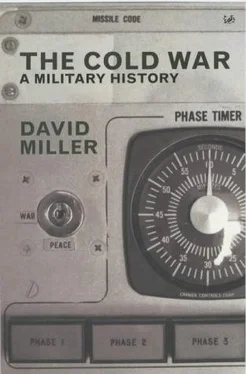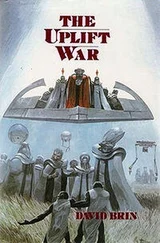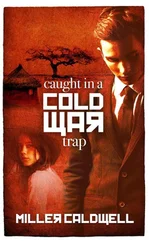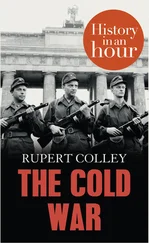In a well-documented event, the street lighting on the Hawaiian island of Oahu suffered thirty separate and serious failures due to the EMP from a test which took place at Johnson Island, some 1,300 km distant. {3}
In the NATO Central European Command, for example, all military units were required to make and to practise plans to deploy from their peacetime camp to a ‘survival location’ at some distance from their barracks. Such emergency deployments were to be implemented on receipt of a codeword (originally ‘Quicktrain’, later ‘Active Edge’).
Such facilities included ‘crisis management centres’ (operations rooms), ‘hardened aircraft shelters’ (HAS), ‘hardened equipment shelters’ (HES), pilot briefing facilities (PBF), etc.
During the Spanish Civil War (1936–9), the small town of Guernica was heavily bombed by German aircraft operating in support of General Francisco Franco. This was the first example in Europe of ‘modern’ bombing, and led to many false conclusions about the effect of such bombing on civil populations.
A ballistic missile is one launched by a motor which then cuts off, so that for the rest of the flight the missile follows a trajectory in which the predominant forces are gravity and aerodynamic drag.
The German Second World War missiles had both a designer’s designation and a Vergeltungswaffen (Vengeance Weapon) designation. The V-1 (Fieseler Fi-103). was a pulsejet-powered, winged missile. (Fieseler was a German aircraft design and manufacturing company). The V-2 (Aggregat A-4) was a rocket-powered long-range missile. (All ballistic missiles designed at the Kummersdorf and Peenemünde development centres had an ‘ Aggregat ’ or ‘model’ number, starting with the A-1 in the early 1930s.)
There was also a third plan, which involved mounting a V-1 missile in a container atop the hull of a diesel-electric submarine, which would surface for the launch. This was the forerunner of the cruise missiles which were operational for a short time in the 1950s and 1960s, and again from the 1980s onwards.
This explains why Moscow was a ‘withhold’ in most US nuclear plans.
Extensive research by the author has failed to unearth a single example of a general or admiral proposing that his own service or branch of service should be reduced in size since national defence would be better served by an increase elsewhere.
Hegel postulated that all progress is the outcome of a conflict of opposites, or that thesis and antithesis interact to produce a synthesis. From this some twentieth century thinkers have suggested that everything is organized in a threefold system: e.g. earth, air, water.
In The Third World War; August 1985 , the war depicted by General Sir John Hackett culminates in a single Soviet strike on the British city of Birmingham, to which the USA and the UK immediately respond by launching two missiles each at the city of Minsk. {4}
See here.
It should be noted, however, that a withhold in a US nuclear plan might not also have been withheld in British, Chinese or French national targeting plans.
Thus, if a missile with a maximum range of 10,000 km with a CEP of 1 km is fired at a target 8,000 km distant, the CEP will be 1 × (8,000 ÷ 10,000) = 0.8 km. It should be noted, however, that the CEP has always been a fairly uncertain figure, not least because neither the USA nor the USSR was keen to reveal the CEP of its own warheads with too great a degree of precision.
The ablative shield is designed to ease the RV’s re-entry into the atmosphere and is constructed of materials which are intended to erode.
A cruise missile flies within the earth’s atmosphere, using aerodynamic lift to overcome gravity and an engine/motor to overcome drag. It is essentially an aircraft with some form of guidance system to replace a human pilot.
The specifications of German and US land-based strategic missiles are given in Appendix 7.
ERCS involved placing a communications package on the missile in place of the warhead. The missiles could then be launched to provide communications relay facilities between national command posts and nuclear forces in the event that all other means of communication had been lost.
The specifications of Soviet land-based strategic missiles are given in Appendix 8.
This missile served in the Red Army for many years, and developed versions are still in wide-scale use in the 1990s in Middle Eastern and Asian armies.
Cryogenic fuels are liquified gases which need to be kept at low temperatures and are therefore difficult to handle.
This explains the brevity of Thor’s operational life with the UK air force.
It was estimated that among the requirements of the racetrack scheme would be: cement – 600,00 tonnes; sand – up to 48 million tonnes; liquid asphalt – 954 million litres; petroleum fuels – 568 million litres; water – 81.3 billion litres. In addition, thirty-five federal laws would have impacted on the land-acquisition process, and the scheme would have required the fourth largest city in Nevada to be built from scratch and then maintained. {4}
A mesa is a type of high, rocky tableland with precipitous sides, found in certain parts of the USA.
The specifications of US and Soviet sea-based strategic missiles are given in Appendix 9, and of US and Soviet strategic submarines in Appendix 10.
There were, in fact, three sub-groups, with relatively minor differences between them: the Lafayette class (nine boats), the James Madison class (ten boats) and the Benjamin Franklin class (twelve boats).
In the mid-1990s a Russian agency was marketing the ‘Surf’ system for civil use; this involved a missile being taken to sea in an amphibious ship and then dropped into the sea for a ‘Hydra’-type launch. Using a combination of SS-N-20 and SS-N-23 missiles with new fourth and fifth stages, it would place a 2,400 kg payload into a 200 km near-earth orbit.
At around the same time, in the early 1950s, the British were working on a similar concept, in which a miniature submarine (known as an ‘X’ craft) delivered a nuclear mine to the entrance of a Soviet harbour. Several ‘X’ craft were built, but the idea was then abandoned.
Unfortunately, after the ship had undergone a very protracted development period, the Soviet navy changed its surveillance system, making Challenger completely redundant.
The first operational H-bomb, the US Mark 17, weighed 19,050 kg.
Specifications of US and Soviet strategic bombers are given in Appendix 11.
Specifications of various tanker aircraft are given in Appendix 12.
Specifications of British nuclear bombs and bombers are given in Appendix 13.
Читать дальше












